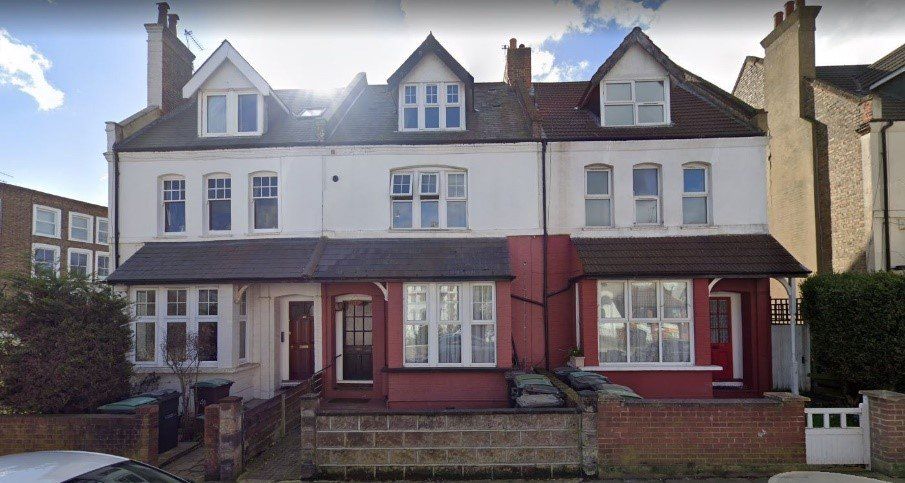UPVC windows- development?
London Borough of Haringey v
Secretary of State for Housing, Communities and Local Government and Paul Muir
[2019] EWHC 3000 (Admin)

Haringey Council brought a S.289 appeal against the decision of a planning inspector to allow an appeal against an enforcement notice issued by the Council.
The notice, issued in May 2018, alleged “without planning permission, the installation of UPVC windows on the ground floor front elevation” of the Property. The Property was located within the Bowes Park Conservation Area. It is the ground floor flat in the left hand house in the photo above.
The owner,, Mr Muir, lodged ground (c) and (f) appeals. In relation to the (c) appeal, it was not at issue that there was no planning permission or PD right. The issue for the Inspector was whether the installation was development.
The statutory framework
Section 55 of the TCPA defines “development” for the purposes of the Act. S.55(2) sets out operations or activities which are not to be taken as development for the purposes of the Act. These include:
“(a) the carrying out for the maintenance, improvement or other alteration of any building of works which…—
(ii) do not materially affect the external appearance of the building.”
‘Building’ is defined at section 336 TCPA 1990:
“Building” includes any structure or erection, and any part of a building, as so defined, but does not include plant or machinery, comprised in a building”
The inspector looked at two key issues; what was the building and what was the meaning of the phrase “materially affect the external appearance of the building”.
The inspector noted that there were a high number of UPVC windows along Myddleton and estimated that 90% of the front windows in the conservation area were UPVC. 49 Myddleton Road was a flat within a converted house, the house was part of a terrace block of three similar properties; all windows at 51 and 53 were PVC and the second floor windows at 49 were PVC.
The Inspector referred to two cases in the Decision Letter; Church Commissioners v Secretary of State for the Environment [1995] 71 P&CR 73 and Burroughs Day v Bristol City Council [1996] 1 PLR 78. Sadly, the judge concluded, he had confused himself on each.
He concluded that, while the PVC windows had a material effect on number 49, they did not have a material effect on the terrace block comprising numbers 49-53 due to the “pre-existing dominance” of PVC windows in that terrace. He decided that this wider terrace building was the “building” in this case and therefore found that there was no development and upheld the appeal.
Haringey Council appealed on two grounds: the first was that the Inspector made an error in concluding that the “building” (for s55 purposes) was the block as a whole. And second that the Inspector erred in assessing the impact of the new windows on the wider area, which was immaterial.
The Inspectorate agreed that the Inspector had misunderstood the Church Commissioners case. But they said that the error was not a material error; the Inspector had merely drawn parallels with that case. He was entitled to find that the “building” was greater than the individual flat at number 49..
Mrs Justice Lieven found that the Inspector had misled himself on the application of the Church Commissioners case. That case (involving a unit in a shopping centre) was not primarily concerned with the question of what was a building for the purposes of S.55, but rather what was the planning unit in an argument over material change of use.
Similarly, the Inspector had been misled by the decision in the Burroughs Day case. That judgment says that the effect of changes to a building must be considered by reference to the building overall, not to a part of it taken in isolation. Mrs Justice Leiven said that, to the extent this was saying that the effect on a single part of a building could not be considered, it was plain wrong.
Ultimately, Mrs Justice Lieven preferred the ordinary meaning of the word “building”. It was unusual, she thought, that the Inspector found that the building constituted an entire terrace rather than an individual property even though it was common practice for each house in a terrace to be considered to be a building and further where there were several listed buildings within a terrace, each separate house would usually be separately listed. Mrs Justice Lieven observed that although this did not mean that the Inspector was wrong to find the whole terrace was a building, he should have given clear and adequate reasoning. That he didn’t suggested he had misunderstood the effect of the Church Commissioners case and his error was material to his decision.
On the second ground, it was clear to Mrs Justice Lieven that the Inspector had taken the wider area into account, and that it had a material impact on the Inspector’s conclusions. She quoted part of the decision letter where the Inspector noted that, had more consistent action had been taken against the other UPVC window installations in the conservation area, the UPVC window on the ground floor at 49 would have had more of a material effect than it did at present. Mrs Justice Lieven made clear that, in working out whether something is development for S.55(2 (a)(ii), the Inspector should not have had regard to anything other than the building itself.
It is hard not to feel sympathy for an Inspector who was asked to uphold an enforcement notice that was shutting the door to a stable from which the horses had long since bolted. Perhaps if Mr Muir, the owner, had made a ground (a) appeal, the Inspector would not have had to stretch “development” beyond its natural meaning. As it was, he did stretch it and it snapped. This case is a reminder that wording in legislation is usually given its ordinary meaning if it is possible to do so.
























